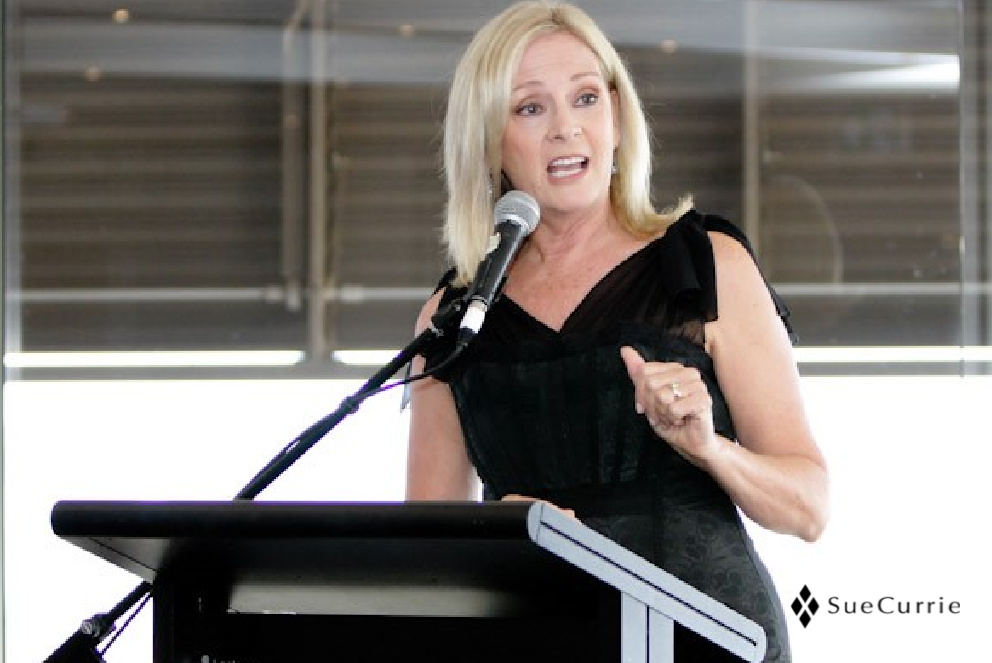You’re presenting at an upcoming conference, you know what you need to say, the slides are looking good, you’ve selected your outfit, but something is missing. It still feels a bit blah!
The missing piece of your presentation may be that you don’t have a story that highlights your points and brings everything together into a compelling talk that holds your audience’s attention.
I’d say just about everyone loves a good story whether told on stage, screen or written in a good book. I don’t profess to be any sort of scriptwriter however as a speaker and trainer I understand the importance of being able to capture your audience’s attention through a well-told story.
A well-told story captivates us and often includes a classic formula such as – rags to riches, boy meets girl, villains and heroes, drama and conflict and other criteria that make a good story.
I have over my years of professional speaking had the opportunity to learn from some masters of the craft Patricia Fripp, Lou Heckler and the director of Story Theater International, Doug Stevenson. They are all wonderful story tellers who craft their stories very well and practise profusely to fine tune and perfect their performance.
Patricia Fripp says, “The worst thing you can do as a speaker is to be boring.”
Don’t let that happen to you. Do get your message across with the aid of an interesting story that relates to the content you are presenting.
In this blog with permission from Doug Stevenson’s Story Theater International, I am sharing his formula for crafting your story.
1. Set the Scene
Go back in time and create the context within which this event takes place. Consider…
- Time: year, month, day, time, season, holiday…
- Place: city, state, country, home, school, office, bedroom, market, beach…
- Atmosphere: sunny, rainy, gloomy, tense, joyous, comfortable, uncomfortable…
- Event: board meeting, wedding, vacation, dinner, soccer game, seminar, movie…
- Relationship: sister, boss, spouse, son, supervisor, teacher, friend, tour guide…
- Data/Statistics: relevant trends and facts…
2. Introduce the Characters (Not necessarily Step 2).
Describe the main characters visually. Start with physical characteristics, age and clothing. Next, describe their personality and style. Describe anything pertinent about your relationship with that person. Introduce characters in the natural sequence that they arrive in your story.
Wendy was a middle-aged woman with long black hair that she wore pulled back in a braid. She always wore fashionable clothes-the latest styles and fancy shoes. She had a habit of always being late for meetings. She also had a tendency to apologize for things, even when she wasn’t responsible for the situation. I think she had a lack of self-esteem, and maybe that’s why she wore fancy clothes-to make up for it.
3. Begin the Journey.
The journey is the task, objective or activity to be accomplished. It is what you are attempting to do before something goes wrong or you encounter an obstacle. Example: Going on vacation to Greece; waiting in line for tickets; meeting a friend for lunch; negotiating a contract; planning the annual meeting; riding a bicycle.4. Encounter the Obstacle.
The obstacle is the challenge. It is a problem, dilemma or question. It may be a person, something to be overcome, or something to be learned. It’s who or what gets in the way of achieving your goals. Define the obstacle in your story. Example: A flat tire, a delayed flight, an abusive boss, a lack of self-esteem, a misunderstanding…
5. Overcome the Obstacle: Using Step Five to Teach.
This is the “how-to” step in the Nine Steps of Story Structure. It is the most critical step because it teaches the lesson on a subliminal level. Write it out. You may choose to perform parts of this step as an IN moment such as talking to yourself (self talk) as you consider your options and come to a conclusion or new awareness.Two Options:
- A: Overcome the obstacle correctly, thereby teaching the correct behavior.
- B: Overcome the obstacle incorrectly. Make mistakes. Show people through your thoughts and behavior what you don’t want them to do. Then, use the story as a spring board to discuss the correct or desired behavior.
Describe, in a linear sequence, each step in overcoming the obstacle. Think incrementally in little steps, not broad strokes. What came first: a thought or an emotion? Then what? Did you go into avoidance mode or take immediate action? Tell the truth. The magic is in the details.
6. Resolve the Story.
This step is relatively easy. Go back through your story script and look for details that need to be resolved. Ask yourself, “What will my audience be wondering about if I don’t tell them? How did things work out in the end?”
7. Make the Point.
- A. Bridge Statement leading into the Point. After resolving the story, say, “What I learned from that experience was…” or “What that experience taught me was…”
- B. Make the Point. What is the ONE point that your story makes above all other points?
8. Ask “The Question”.
The question formally transfers the learning point to each audience member. It asks them to take personal accountability in relation to a specific question. It is a YOU question that forces them to consider how the lesson of the story applies to them. Example: “How about you? What do you need to do to lead by example?”
9. Repeat the Point / The Phrase That Pays.
Re-state or repeat the point verbatim. Use the exact same words you used the first time you made the point. Memorize the sentence or Phrase That Pays.
Crafting your story using The Nine Steps of Story Structure will give you the foundational architecture of a great story. Your audience will be better able to follow the sequence of our story, and remember your profound message! With the Nine Steps as your “bones”, you can now flesh out your story with acting and comedic techniques to make it amazing.
Learn more about Doug Stevenson at www.storytelling-in-business.com and sign up for his newsletter to receive the full article and more…
The ability to tell a story through public speaking is a powerful way to showcase your personal brand. Learn more about your personal brand in my free eBook The Secret To Yor Personal Brand Revolution - Ten Steps to Elevate You to The Top.
Sue Currie is a speaker and the author of IMPRESSario, Present and Promote the Star Within You. She is passionate about helping business executives and entrepreneurial professionals elevate their personal brand, image and professional presence. Sue’s suite of services delivered through workshops, consulting, coaching and keynote presentations provides a multi-faceted approach to gain high transformation for her clients.




